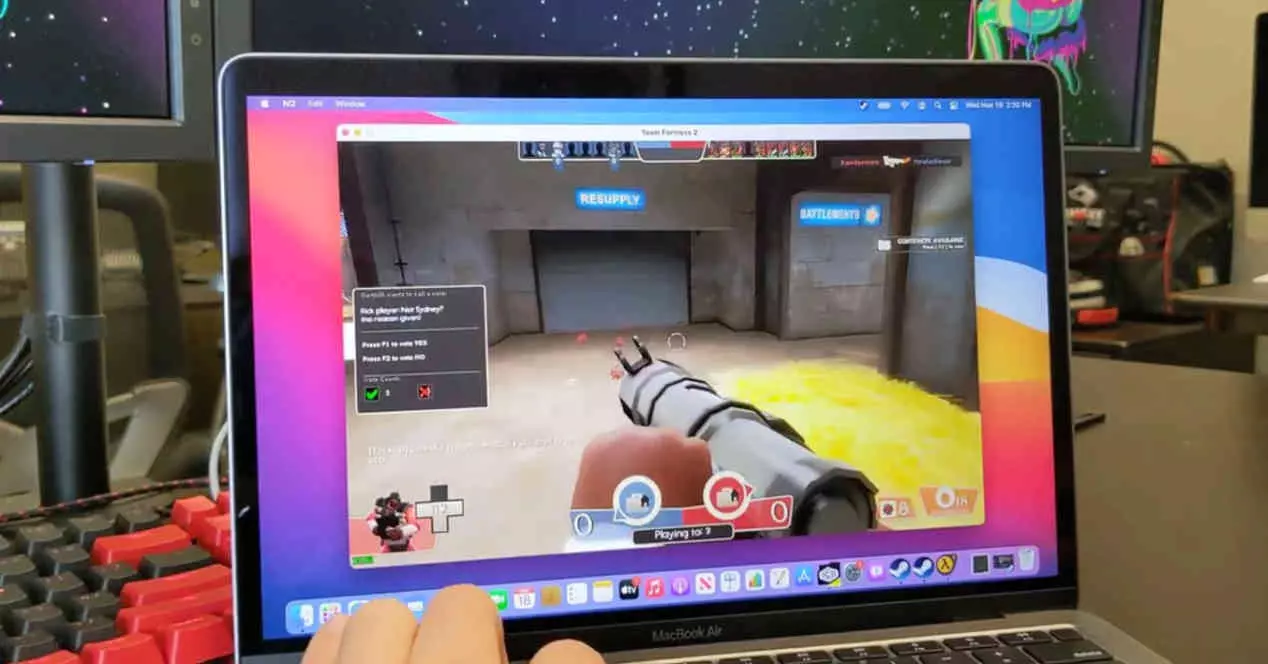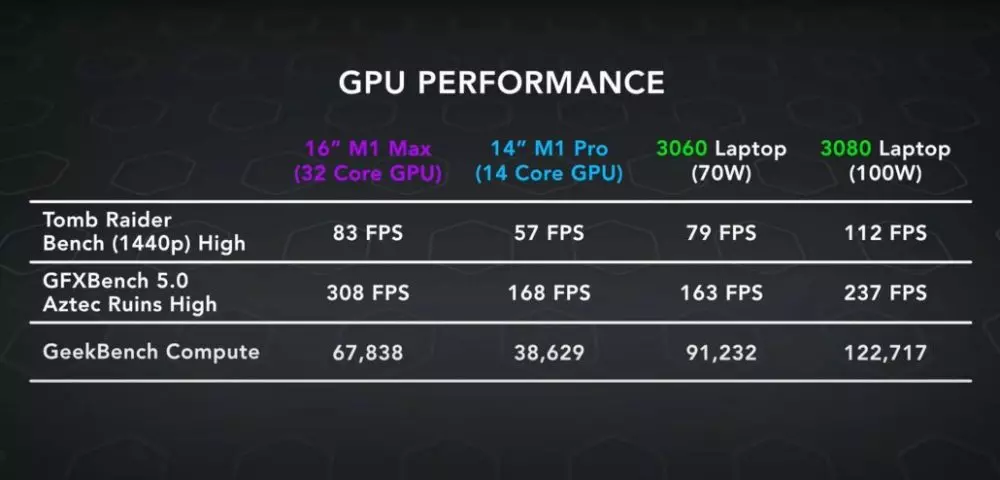
One of the strengths of Apple’s M1 Max APU or SoC is its integrated GPU, the largest on a chip of its kind for a personal computer to date. However, the most popular function of any graphics processor is to generate the graphics for video games and the M1 Max does not seem to measure up. Why?
A few days ago we told you about the performance of the M1 Max benchmarks where the integrated GPU of the M1 MAX holds the type against the dedicated GPUs of NVIDIA and AMD. Keep in mind that Apple with the leap to creating its own processors has not only abandoned Intel in CPU, but also NVIDIA and AMD in high-caliber GPUs for its high-end Macintosh. Although in the case of the ties with those of Jensen Huang they have been severed a long time ago.
M1 Max vs NVIDIA RTX 30 in video games
The Macintosh have not stood out in the face of video games, since they are completely equal to Apple. The proof of this is that they have the resources and processes to make a video game platform that competes against PlayStation, Xbox or Nintendo from you to you, but they do not want to do it. In other words, in Cupertino they don’t think their computers to play games.
Well, through a series of performance tests it has been possible to see how the integrated GPU of the M1 Pro and M1 Max can only keep the type in performance compared to an RTX 3060 or an RTX 3080 for laptops in GFXBench 5.0, the which by the way, is the performance test that we discussed a few days ago.
In the Tomb Raider benchmark at 1440p, we can see how the M1 Max pulls out 83 FPS in videogames, in front of 57 FPS of the M1 Pro, 79 FPS of the RTX 3060 Mobile and 112 FPS of the RTX 3080 Mobile. Although the differences are aggravated if we talk about the Geekbench computing benchmark where NVIDIA’s dedicated graphics cards even triple the performance compared to Apple’s integrated GPUs.
Interpreting the results
If there is something we have to concede to Apple, it is the fact that its integrated GPU, thanks to being a Tile Renderer, is much more energy efficient than using NVIDIA graphics cards for gaming laptops. The latter by themselves already consume and generate the same amount of heat or more than the complete Cupertino solution. Let’s not forget that Macintoshs have become personal computers since the late 90s with a strong and unique industrial design that requires specific hardware solutions, more based on performance per watt than raw power.
Another point that we have to take into account, especially in the case of the Tomb Raider benchmark, is that this game works under Rosetta and therefore there is a process of transferring the x86 instructions for the original game to the native ones under the ISA ARM recently adapted by Apple. So it’s really an unfair comparison when comparing a game that runs natively on Windows to one that doesn’t run on Macintosh M1 Pro and M1 Max.
To conclude, who buys an Apple Macintosh to play games? It is a pity that those of Tim Cook do not take them seriously, since due to hardware limitations it is not, it is due to sheer disinterest.




